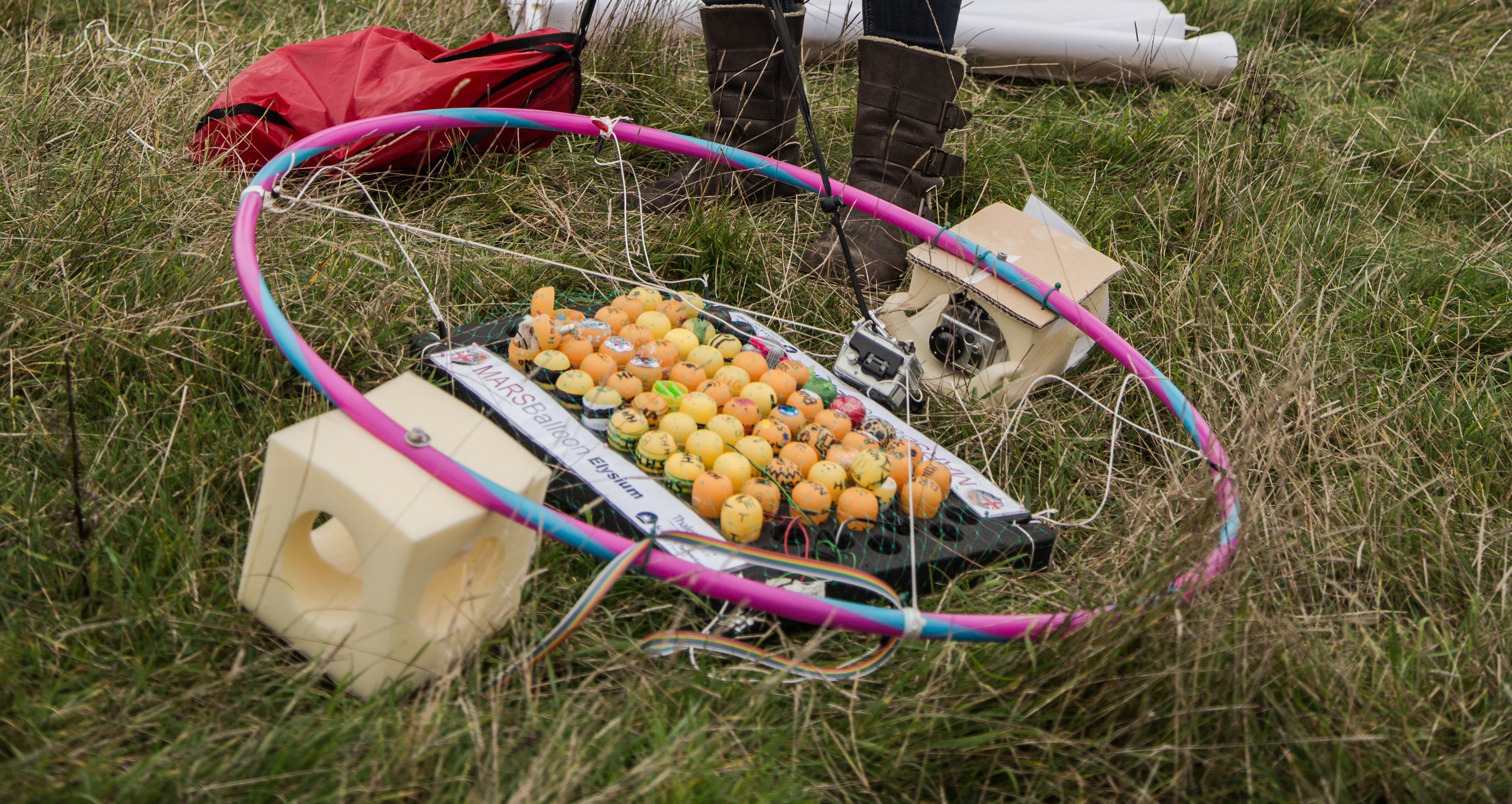MARSBalloon: the root to a STEM career

Following a trip into near space, experiments from MARSBalloon's latest mission, Firestar, have now been safely returned to their schools and the exciting task of processing the results has begun.
On board this latest expedition – which travelled 30 kilometres into the Earth’s atmosphere, experiencing Mars-like conditions – were four experiments from Brighton & Hove High School for girls. Alison Thompson and Naomi Smith, teachers at the school, introduced MARSBalloon as a class-based science project and the Year 6 students have since discovered a new passion for space.
Alison says: “We originally requested one spot on the Firestar flight but the class was so enthusiastic that we ended up submitting four experiments.
The girls have absolutely loved MASRBalloon and they have consequently started to look at what might be involved in a real mission to Mars." Alison Thompson, Teacher, Brighton & Hove High School
"From assessing the necessary attributes of an astronaut to researching information about the red planet, they have thought about every aspect of the mission. The girls were particularly inspired by the MarsOne project which hopes to establish a permanent human settlement on Mars by 2026.”
Mars science for the future
Brighton & Hove High School created a wide variety of experiments for MARSBalloon which tested activities and objects that humans might want to do on or bring to Mars. In their first Kinder Egg™ capsule, the girls placed a broad bean which they have now planted alongside a control bean. As the plants grow, they will monitor any differences between the two, including the taste of their beans.
Their second capsule contained a piece of rubber tubing as the class felt this is an essential material for humans, now and in the future. Following its exposure to extreme conditions, the rubber tubing will be stretched and its elasticity will be compared to that of a control.
The girls also sent two magnets of varying strength into near space. Comparing them with two control magnets, the space magnets’ power will be assessed by seeing how many paper clips they can pick up and by using a balance to measure the force exerted by the magnets at certain distances.
Year 6 chose a watch battery for their fourth experiment. Using a multimeter to make readings of current and resistance, the girls will measure the impact of Mars-like conditions on the battery.
Promoting careers in STEM
The driving force behind MARSBalloon is to promote the exciting career opportunities in STEM (science, technology, engineering and maths) to young people, especially girls who might not have considered a job in an industry that is seen to lack gender diversity.
Naomi says: “My perception is that women are under-represented in the space industry, and I know that women are massively under-represented in engineering as a whole.
I think the MARSBalloon project is a great way to capture young people’s interest, enabling dialogue about the space industry and highlighting the opportunities available as a space scientist or engineer.” Naomi Smith, Teacher, Brighton & Hove High School
National statistics demonstrate that most young women move away from STEM subjects as they choose their A-level options, often ruling them out of a rewarding career in engineering.
Alison says: “I think for some, it’s just that their preference might be for English, Languages or Humanities. Often our girls are talented across the board and could choose to study any A-levels.
“We get very good numbers in our sixth form studying STEM subjects. Being a girls school definitely helps us to buck the national trend and we are delighted by the number of girls we have studying Physics, which is much higher than the national average. We also see an encouraging number of our students going on to study STEM-related degrees.”
Naomi adds: “I think we do better than average because we actively provide opportunities for our girls to see the broad range of careers open to STEM graduates. We organise regular STEM enrichment activities and STEM careers evenings with guest speakers, as well as actively promoting the Arkwright Scholarship and other STEM enrichment schemes. We also take the girls to visit relevant institutions and organisations; we recently took a trip to CERN, the European Organisation for Nuclear Research based near Geneva.”
Alison believes that the onus is on educators to broaden the students’ horizons and to challenge traditional perceptions of engineering.
From my point of view as a science teacher, it is down to us to make the link between the science that we teach and how it is relevant to real world careers and opportunities." Alison Thompson
"It is vital to incorporate this information into the content that must be taught and we are fortunate that there are loads of fabulous projects out there, like MARSBalloon, to bridge the gap.”
Alison and Naomi were so impressed with MARSBallloon that they have recommended the project to colleagues and are excited for other classes to take part in the next launch. Naomi says: “Thanks to MARSBalloon, the Year 6 girls are now very receptive to a career in space and their enthusiasm for STEM subjects continues to grow.”
Were you involved in sending experiments into near space on board Firestar? Tell us what you learnt from MARSBalloon's latest flight by tweeting @ThalesUK or sending us a Facebook message.
If you would like to find out more about MARSBalloon and keep up to date with future flights, please visit www.marsballoon.com.